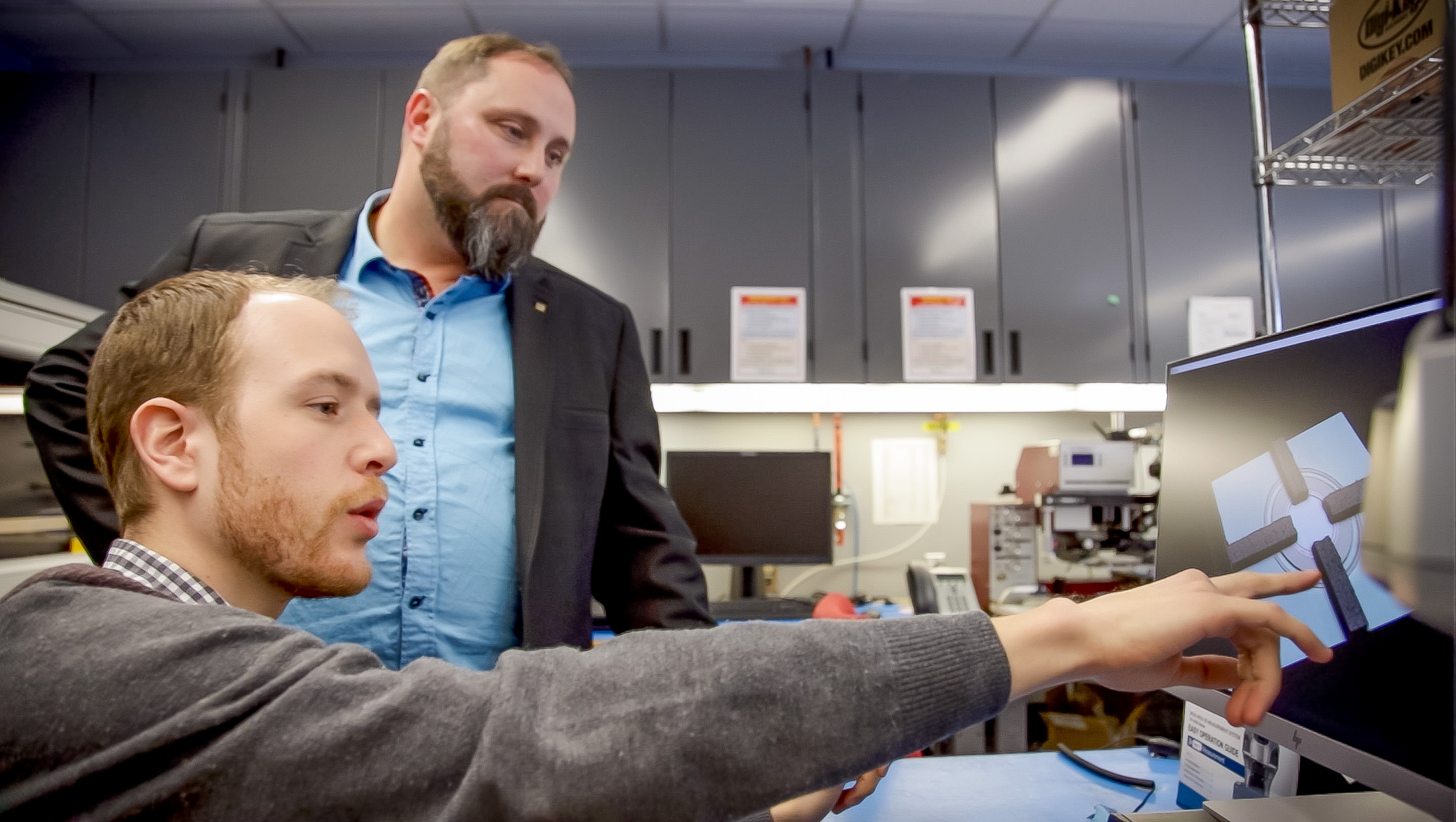The photosensor array on an average cell phone camera is made up of millions of pixels, each of which collects light signals that can be quickly processed into coherent digital images. Although this everyday feat remains impressive, it is just the start of what Jean-François Pratte wants to do.
Pratte, a professor in the University of Sherbrooke’s Department of Electrical and Computer Engineering, has been designing sensors with processing systems that can calculate the time of flight for individual light particles, called photons. The result is detection on the order of picoseconds — a millionth of a millionth of a second — that provides the foundation for an entirely new generation of this technology.
“Not only can we detect one photon at a time, but we’re able to say when it happened,” he says.
At the heart of this microsystem is the single-photon avalanche diode (SPAD), which emerged from one of Sherbrooke’s flagship research areas, positron emission tomography (PET). This sophisticated medical scanning technology detects the minute traces of gamma rays from radioactive molecules that have been injected into a patient’s body, which can provide information about the metabolism of the surrounding tissue. Although these signals emerge from extremely small amounts of a radiotracer, the sensitivity of the SPAD array, is such that it can turn these minuscule bits of data into highly detailed images in real time.
This powerful capability inspired Pratte and his colleagues to consider other applications of the technology.
“Microsystems could be designed to have close to no power consumption when idle and waiting for a photon, making this technology of great interest for large area detectors in particle physics,” he says.
‘Not only can we detect one photon at a time, but we’re able to say when it happened’
By way of example, he points to ambitious experiments designed to detect neutrinos, elusive astroparticles found in facilities deep underground, and which might reveal themselves a few dozen times in any given year. These rare and fleeting encounters call for photosensor arrays with surface areas on the order of a few square metres to hundreds of square metres. For fun, compare this to the size of the camera on your smartphone!
Key to the success of his work has been his development of a 3D SPAD. In current 2D systems, these elements are positioned next to each other on a single layer, limiting electronic function and photosensing capability. His 3D version has electronic and photosensor components stacked on top of each other, so that they don’t compete with one another. “There is no trade-off between the size of the detector and the electronic functionality,” he explains.
Installing 3D converters in a working PET scanner results in higher-contrast images using lower doses of radiotracer, he says. “This also makes faster, more efficient use of this equipment, so it reduces wait times for patients within the health care system.” In 2018 Pratte was recognized for this work with the IEEE’s prestigious Radiation Instrumentation Early Career Award.
CMC made possible his work on 3D Photon-to-Digital converters because it provided access to the powerful software and foundry services needed to design and fabricate this kind of system.
“Without their support for integrated circuit fabrication, Canadian researchers could not compete with the rest of the world,” says Pratte, who also credits CMC with nurturing the talent that animates his laboratory. CMC’s TEXPO competition, he says, is especially valuable in helping individuals hone their research, prototyping and presentation skills.
“It’s the experience of competing and having quite a tough jury in front of you, made up of top-ranked professors and industry experts. It’s such an opportunity for young researchers to flourish.”
Photo credit: Reinier deSmit
October 2019

